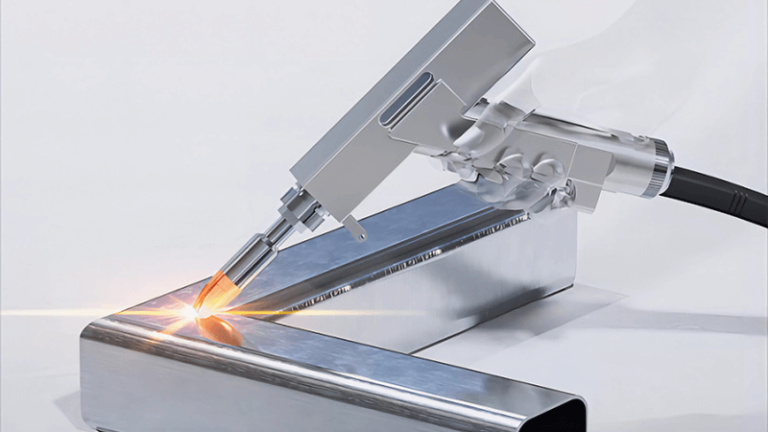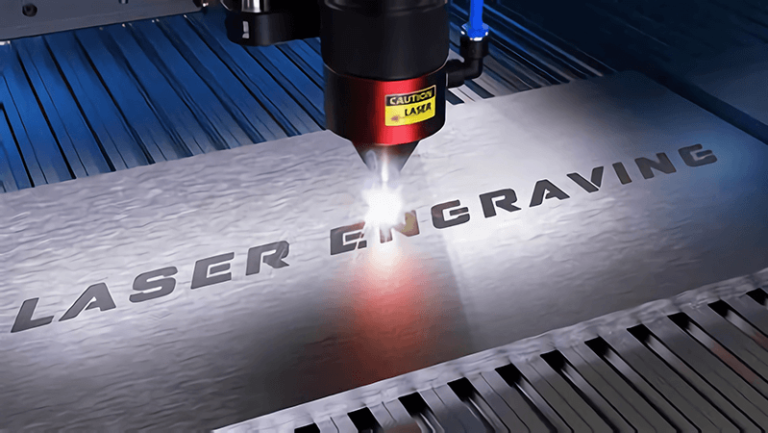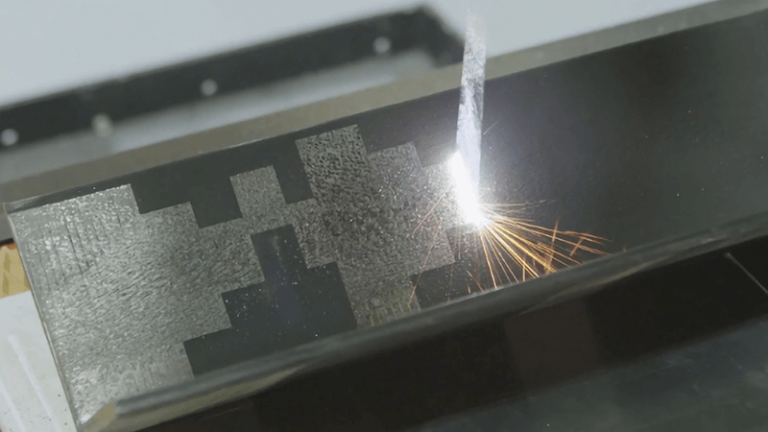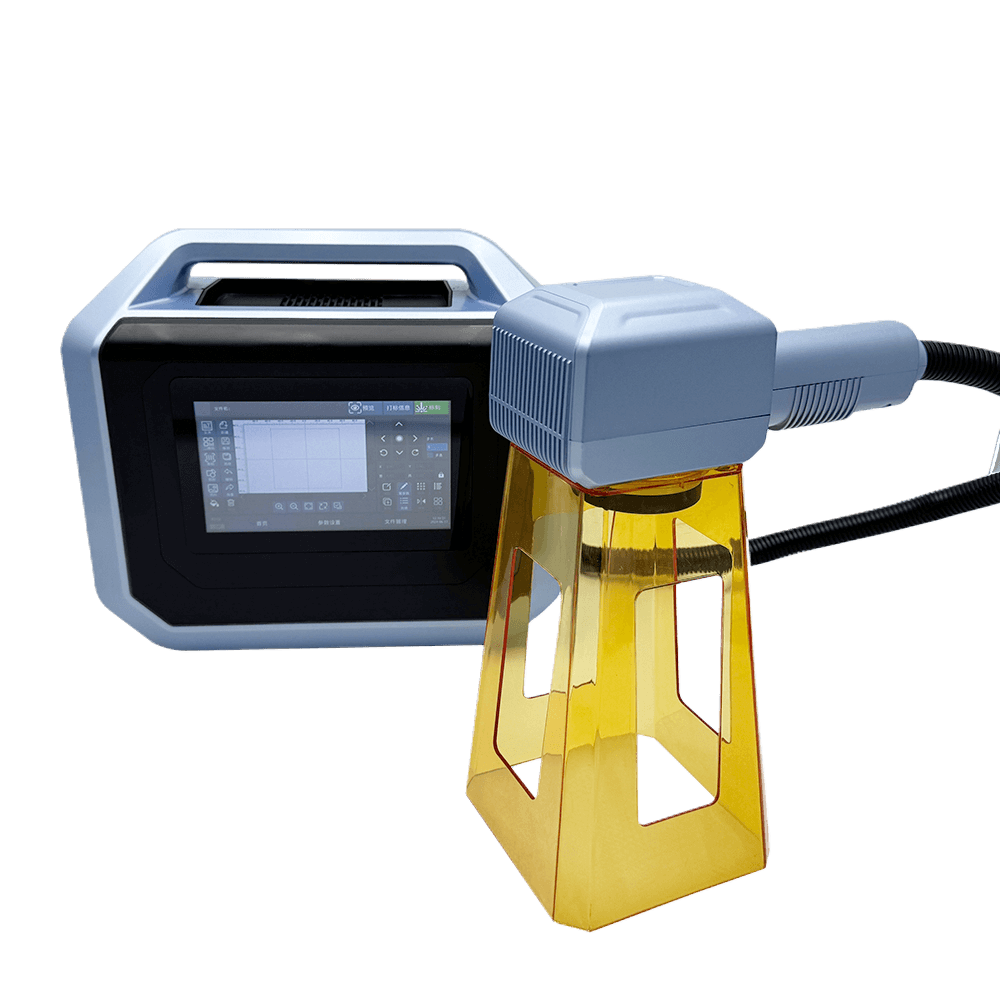
Curious about handheld laser marking machines and how they operate? You're in the right place!
A handheld laser marking machine uses a focused beam of light to alter the surface of a material to create designs, patterns, or text. The laser's precision allows for intricate and permanent markings on a variety of materials, from metals to plastics.
Now that you have a basic understanding of how these machines work, let’s delve deeper into their applications, benefits, and how they compare to other technologies. This knowledge will equip you with everything needed to make an informed choice.
Handheld lasers can mark metals, plastics, and wood.True
Handheld laser markers are versatile, marking metals, plastics, ceramics, and wood.
What Materials Can You Mark with a Handheld Laser?
Explore the versatility of handheld laser markers and discover the wide range of materials they can work on.
Handheld laser markers are incredibly versatile, capable of marking materials such as metals, plastics, ceramics, and even wood. Their adaptability makes them ideal for diverse industries, including automotive, aerospace, and consumer goods. The choice of material often dictates the type of laser used, ensuring optimal results and precision.
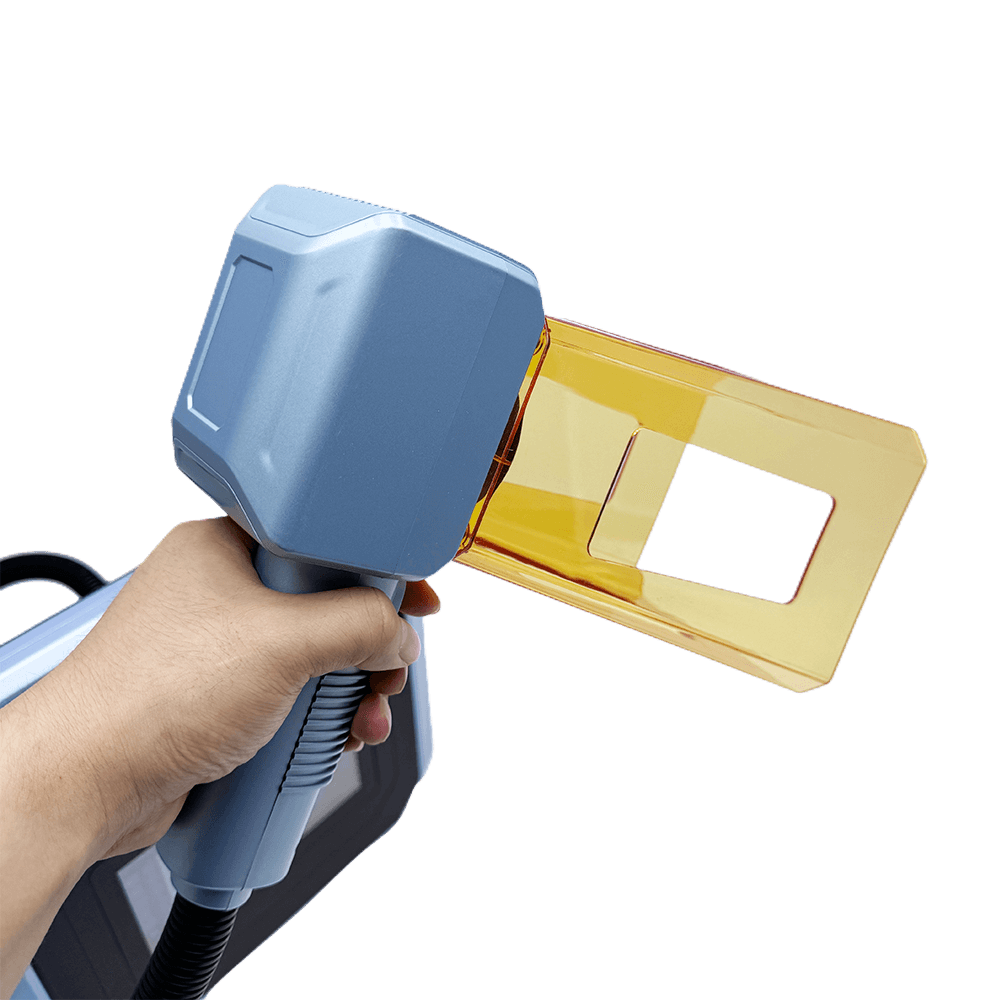
Metals: Precision and Durability
Handheld lasers excel in marking metals such as stainless steel, aluminum, brass, and copper. These machines use fiber lasers, which provide deep, permanent markings ideal for serial numbers, barcodes, and logos. Metals marked with lasers benefit from high resistance to wear and corrosion, making them suitable for both industrial and consumer applications.
Plastics: Versatile and Efficient
Different types of plastics can also be marked with handheld lasers. CO2 lasers are often preferred for plastics as they can produce clear, legible marks without damaging the material. Applications in this category include marking electronic components, household items, and packaging.
Ceramics: Aesthetic and Functional Marking
Ceramic materials pose unique challenges due to their brittleness. However, lasers can achieve detailed designs and text on ceramics without causing surface damage. This is particularly useful in industries that require marking on electronic insulators or decorative tiles.
Wood: Natural and Detailed Patterns
While less common, wood can also be marked with a handheld laser. The laser's precision allows for intricate designs and text, enhancing the aesthetic value of wooden products. This application is popular in crafting and custom furniture manufacturing.
| Material | Recommended Laser Type | Common Applications |
|---|---|---|
| Metals | Fiber | Industrial parts, jewelry, tools |
| Plastics | CO2 | Electronics, consumer goods |
| Ceramics | Fiber | Decorative tiles, electronic insulators |
| Wood | CO2 | Custom furniture, crafts |
Factors Affecting Hand-held Laser Marking on Different Materials
The effectiveness of laser marking depends on several factors:
- Material Composition: Different materials require specific laser types for optimal results. For instance, fiber lasers1 are better suited for metals.
- Thickness and Density: Thicker materials may require more powerful lasers to achieve desired depths.
- Surface Finish: The reflectivity of a material's surface can affect laser performance; polished surfaces might require adjustments to laser settings.
Understanding these factors helps in selecting the appropriate laser technology to ensure precise and durable markings.
Fiber lasers are ideal for marking metals.True
Fiber lasers provide deep, permanent markings on metals.
CO2 lasers are unsuitable for marking plastics.False
CO2 lasers produce clear marks on plastics without damage.
How Does Laser Marking Compare to Traditional Engraving?
Ever wondered how laser marking stacks up against traditional engraving methods? Let's explore the differences!
Laser marking offers greater precision, speed, and flexibility compared to traditional engraving methods. While both techniques are used for adding designs or information to materials, laser marking is generally faster and more versatile, making it suitable for a wider range of applications.
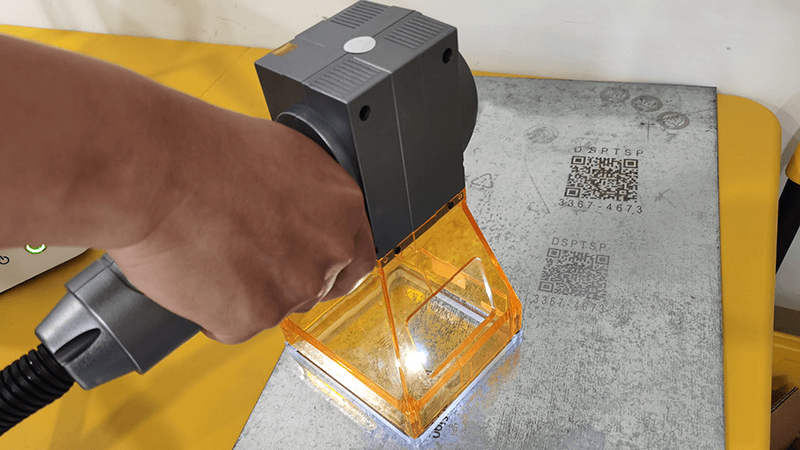
Speed and Efficiency
One of the most significant differences between laser marking and traditional engraving2 is speed. Laser marking uses a highly focused beam that can work incredibly fast, often completing tasks in seconds that might take minutes with engraving. This speed advantage makes it ideal for high-volume production environments.
Precision and Detail
Laser marking can achieve an extremely high level of precision and intricate detail. The laser beam is controlled by sophisticated software that allows for very fine adjustments, producing clean lines and complex patterns. In contrast, traditional engraving relies on physical tools that might struggle with such precision, especially on harder materials.
| Feature | Laser Marking | Traditional Engraving |
|---|---|---|
| Speed | Fast | Moderate to Slow |
| Precision | Extremely precise | Limited by tool capability |
| Material Range | Wide (metals, plastics, ceramics, etc.) | Mostly metals and softer materials |
| Flexibility | Highly flexible with design changes | Less flexible |
Material Versatility
Another advantage of laser marking is its ability to work on a wide range of materials, from metals and plastics to ceramics and glass. Traditional engraving is typically limited to softer materials, as the physical tools used can wear out quickly on harder surfaces.
Flexibility and Customization
With laser marking, design changes can be made quickly via software updates without the need to create new physical tools. This adaptability is particularly beneficial in industries where customization is key. Traditional engraving requires a new tool or adjustment for each change, which can be time-consuming and costly.
Environmental Impact
Laser marking is a contactless process, meaning it does not require the use of inks or other consumables that traditional engraving might need. This reduces waste and the environmental impact, making laser marking a more sustainable option.
Laser marking is faster than traditional engraving.True
Laser marking uses a focused beam that completes tasks quickly.
Traditional engraving is more precise than laser marking.False
Laser marking achieves higher precision due to software control.
What Are the Advantages of Using a Handheld Laser Marker?
Discover the benefits of handheld laser markers and how they can transform your business operations.
Handheld laser markers offer precision, portability, and versatility, making them ideal for various applications. They enable intricate and permanent markings on diverse materials without contact or damage, enhancing efficiency and quality across industries.
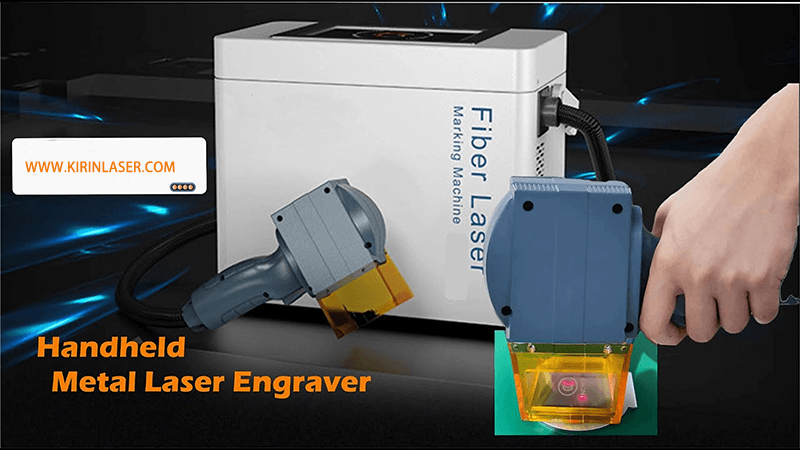
Precision and Accuracy
Handheld laser markers provide exceptional precision3 in marking, ensuring that even the most intricate designs and tiny details are captured accurately. Unlike traditional engraving methods, these markers utilize a concentrated beam of light that can be finely controlled to achieve the desired outcome without any physical contact with the material.
Portability and Flexibility
One of the standout advantages is their portability. Unlike large, stationary machines, handheld laser markers can be easily transported and used in various locations. This flexibility allows businesses to perform marking tasks on-site or in different parts of a factory without needing to move heavy equipment. It's particularly beneficial for sectors like construction or automotive where large parts need labeling directly on the field.
Versatility Across Materials
These devices can mark an extensive range of materials including metals, plastics, ceramics, and even organic materials like wood or leather. This versatility makes them suitable for numerous applications, from industrial part identification to artistic customization.
Non-Contact Processing
Handheld laser markers do not physically touch the material being marked. This non-contact process minimizes the risk of damaging or deforming delicate surfaces, which is particularly crucial when working with sensitive electronics or thin metals. Moreover, this feature leads to longer lifespan of the tools as they do not suffer wear and tear from physical contact.
Efficiency and Speed
Laser marking is incredibly fast compared to traditional methods. The speed at which designs can be applied enhances production efficiency and throughput. Additionally, since the process requires minimal setup and preparation, it further reduces downtime in production cycles.
Cost-Effectiveness
Over time, handheld laser markers prove to be cost-effective. While the initial investment might be higher compared to other marking tools, their durability, low maintenance costs, and increased efficiency can lead to significant savings.
| Feature | Benefit |
|---|---|
| Precision | High accuracy in intricate designs |
| Portability | Easy transport for on-site work |
| Versatility | Works with multiple materials |
| Non-Contact | Reduces material damage risk |
| Speed | Faster marking improves production |
| Cost-Effective | Lower long-term costs |
Incorporating a handheld laser marker into your workflow not only enhances your product offerings but also improves operational efficiency and reduces costs over time. To fully understand how these devices can revolutionize your processes, it's essential to consider their varied applications across different industries.
Handheld laser markers require physical contact to mark materials.False
They use a concentrated beam of light for non-contact marking.
Handheld laser markers can only be used on metal surfaces.False
They can mark metals, plastics, ceramics, wood, and leather.
How Much Does a Handheld Laser Marking Machine Cost?
Discover the price range for handheld laser marking machines and what factors influence their cost.
The cost of a handheld laser marking machine can range from $3,000 to $15,000, depending on factors like brand, power output, and features. Basic models are less expensive, while advanced machines with higher precision and additional capabilities are priced at the higher end.
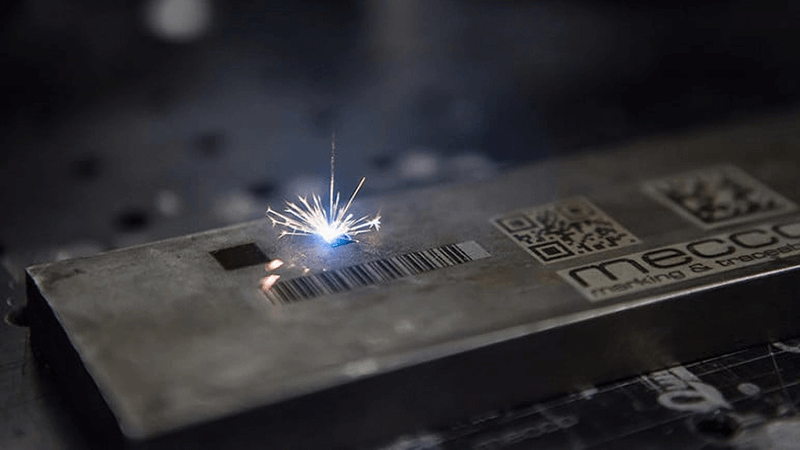
Factors Influencing the Cost
When considering the purchase of a handheld laser marking machine4, several key factors influence the pricing:
-
Power Output: Machines with higher wattage generally cost more due to their capability to mark tougher materials more efficiently. A 20W machine might be cheaper compared to a 50W or 100W option.
-
Brand Reputation: Established brands tend to charge a premium due to their reputation for quality and reliability. However, lesser-known brands might offer competitive pricing with similar features.
-
Features and Technology: Advanced features such as automated functions, enhanced software compatibility, and wireless connectivity can increase the cost significantly. For instance, machines with 3D marking capabilities are priced higher than those that offer only 2D marking.
-
Material Compatibility: Machines capable of marking a broader range of materials, including metals, plastics, and ceramics, may come at a premium compared to those limited to fewer material types.
Price Range Comparison
| Brand/Model | Power Output | Key Features | Estimated Price Range |
|---|---|---|---|
| Brand A Model X | 20W | Basic marking capabilities | $3,000 - $5,000 |
| Brand B Model Y | 30W | Enhanced precision, portable | $5,000 - $8,000 |
| Brand C Model Z | 50W | 3D marking, extensive software | $10,000 - $15,000 |
Cost vs. Benefit
Investing in a laser marking machine5 could save costs in the long run by reducing material waste and increasing productivity. Weighing the initial investment against potential benefits such as durability of markings and time efficiency can help in determining the right machine for your needs.
Explore different models and assess how the added features might benefit your specific application. Consider if a more expensive model aligns with your business goals in terms of speed, accuracy, and versatility.
Handheld laser marking machines start at $3,000.True
The price range for these machines begins at $3,000 as stated.
A 20W laser machine costs more than a 50W machine.False
Higher wattage machines like 50W are more expensive than 20W ones.
Conclusion
Understanding handheld laser marking machines empowers you to make smart choices for your projects. Whether for personal or industrial use, these devices offer unmatched precision and efficiency.
-
Explore how fiber lasers excel in marking metals with precision.: Fiber lasers are ideal for a number of applications including laser cutting, cleaning, texturing, engraving, drilling, marking, and welding. ↩
-
Discover how laser marking outperforms traditional methods in precision and versatility.: Laser marking discolors the surface of the material, while laser etching and engraving actually removes a portion of the surface area as it marks. ↩
-
Learn about the exactness these tools offer for detailed designs.: Equipped with a high-precision two-dimensional scanning head. Laser etching is completed within 20 seconds, achieving fast marking. ↩
-
Gain insights on why prices vary among laser machines.: The price of laser marking machines depends on various factors, such as laser type, power and wattage, size and marking area, and the machine's integration ... ↩
-
Discover long-term advantages of using laser marking machines.: Laser marking is an investment that saves your budget in the long run. ... Laser marking technology can mark the 2D codes to be shot blast resistant. ↩


